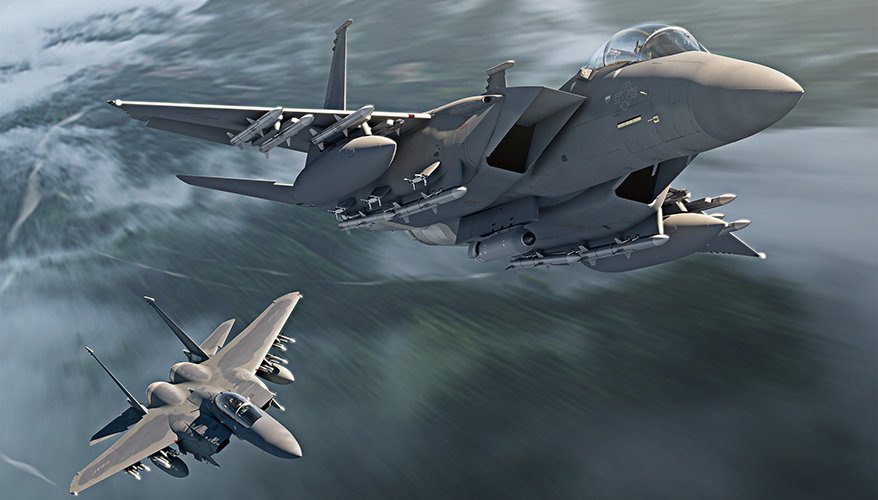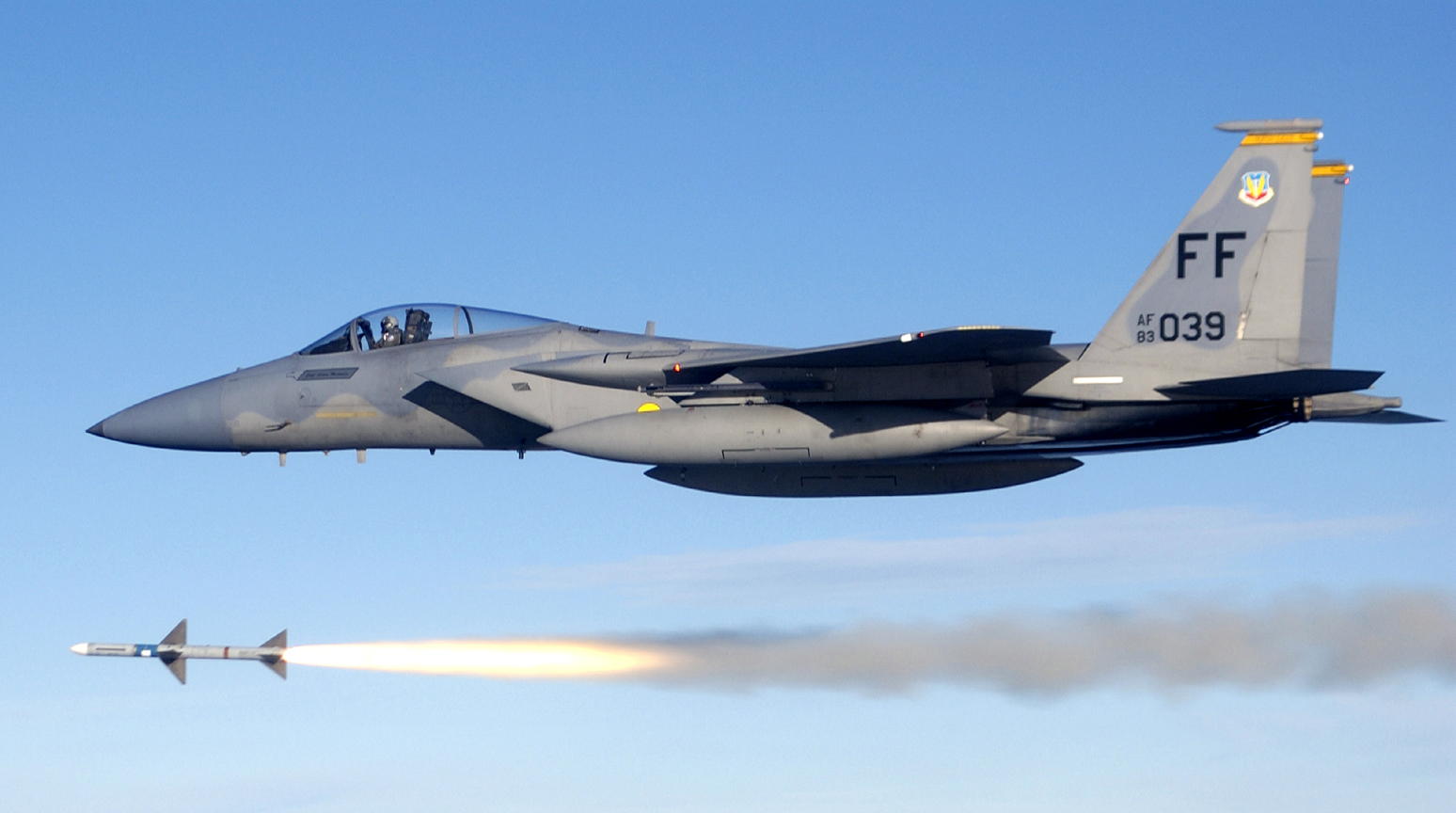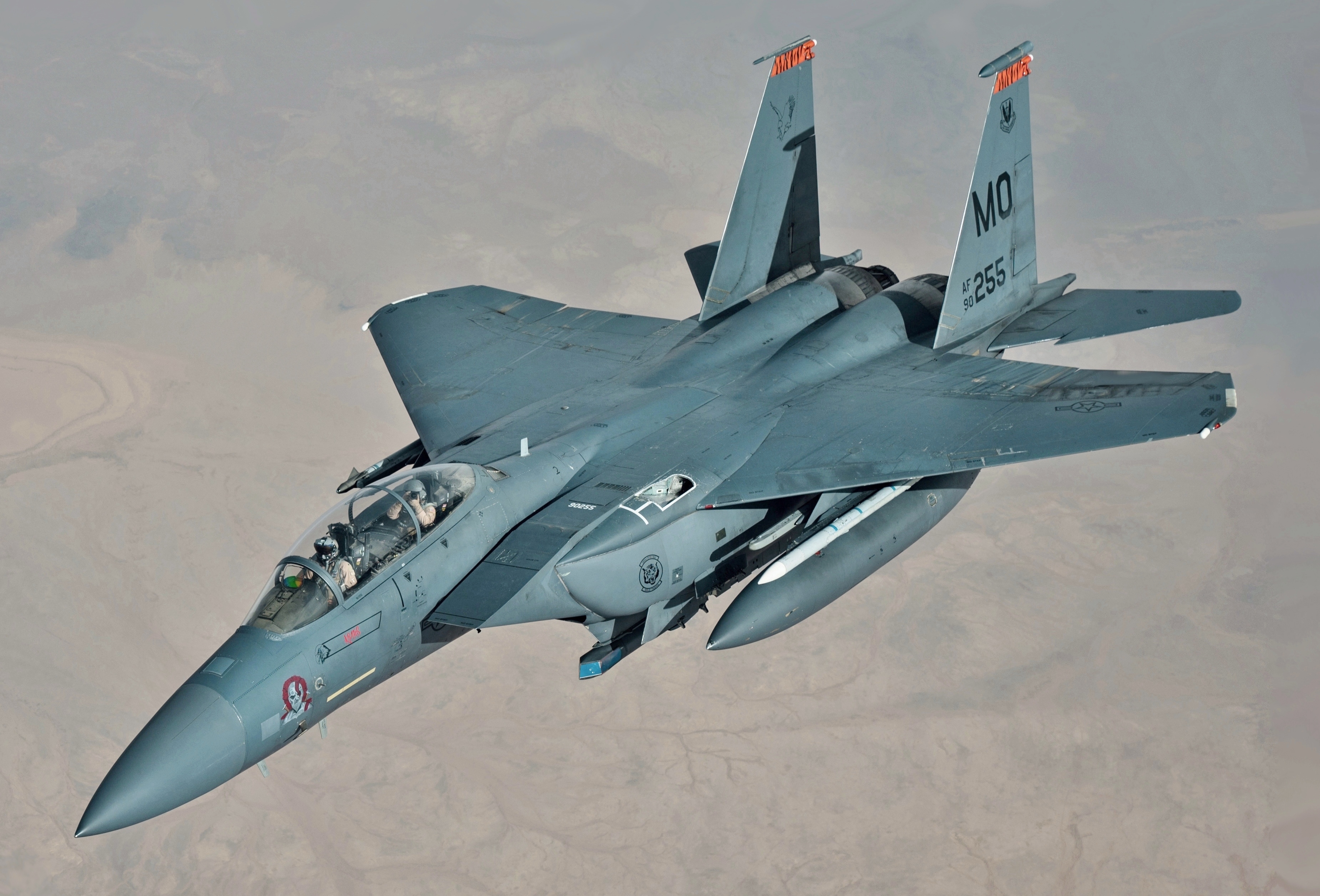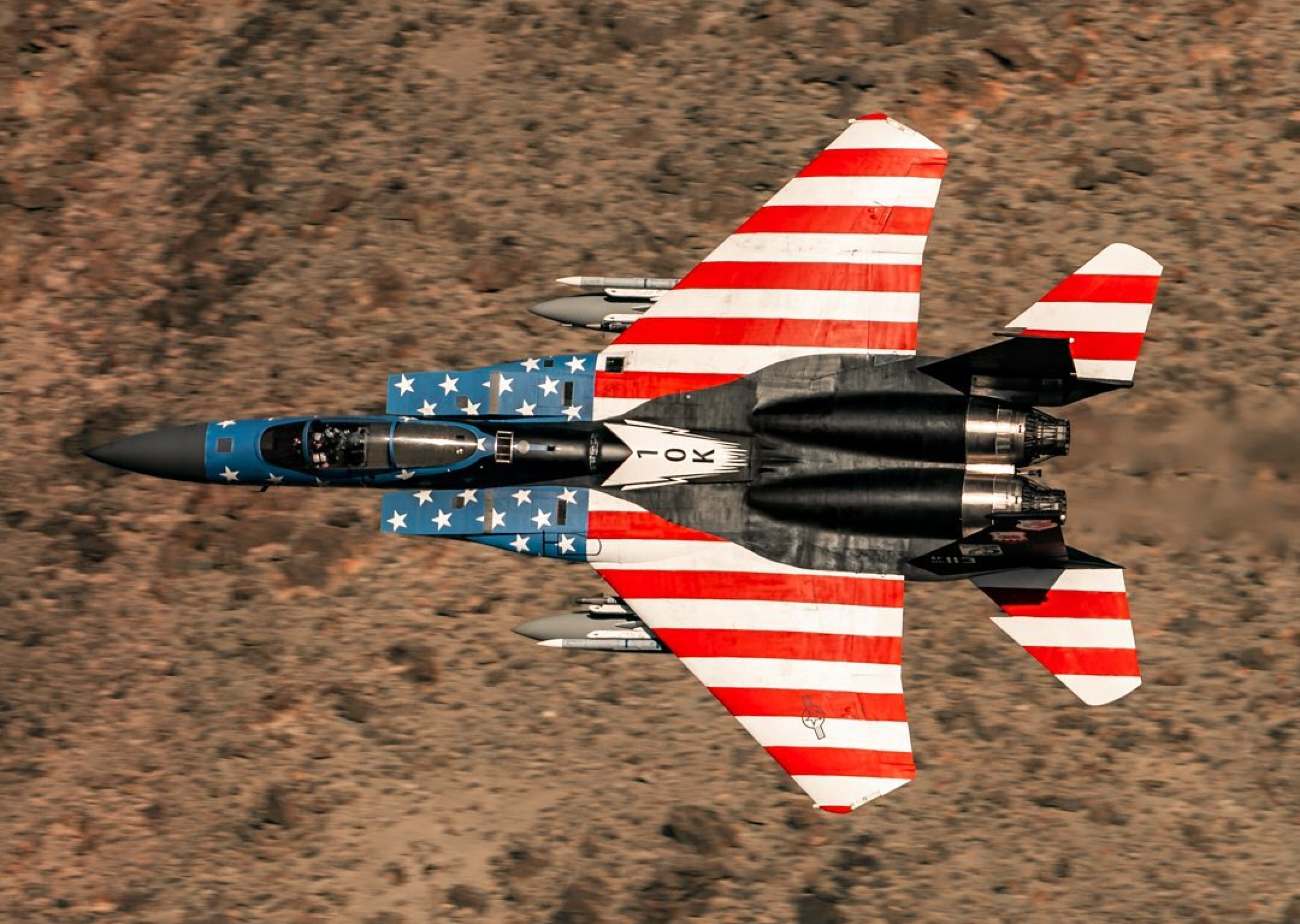Boeing Aerospace announced on September 7 that Poland was actively interested in buying the F-15EX Eagle II fighters. The announcement was made at the press conference at the annual MSPO defense trade exhibition without divulging specific details.
Tim Flood, Boeing’s senior director of Global Business Development for Europe and Americas, said in a statement: “Poland’s interest in the F-15EX confirms its dedication to the preparedness and effectiveness of its military forces.
The F-15EX offers superior interoperability, supportability, and affordability and a robust industry plan to support Poland’s goal of developing independent defense capabilities.”
Rob Novotny, the F-15 program’s head of commercial development, refused to discuss the “price and delivery schedule” of the American company’s proposal to Warsaw.
Additionally, he stated that “there are no negotiations and no contract talks, only some conversations with the Polish Air Force.”
So far, the US Air Force (USAF) is the only customer of the Eagle II and has already acquired two of these fighters and is preparing to purchase 104 of them.
Although the aircraft is being aggressively pitched for export to some countries, no formal agreement has been signed to sell this fighter outside the United States.
The F-15EX, the most modern iteration of the F-15, has several new features and capabilities over earlier Eagles, including a powerful active electronically-scanned array (AESA) radar and a sophisticated electronic warfare suite.
Boeing frequently highlights the jet’s impressive combat range and cargo capacity compared to other American and international fighters on the market.

“The F-15EX is the world’s most advanced fighter with unmatched capability, lethality, and survivability and is the right fit to strengthen Poland’s security needs,” said Novotny.
“Through enhanced interoperability with US and NATO forces, capacity for technology growth, and a 20,000+ hour economic, operational airframe life, Poland can expect the F-15EX to win in existing and future threat environments.”
The journey of US F-15s, from when they entered service with the United States to when they were upgraded to a new role as Eagle IIs, has been spectacular. As Boeing eyes new customers for an aircraft that is an updated variant of its best dogfighter, EurAsian Times dives deep into the rise and fall and another peak in F-15’s popularity.
What Makes The F-15 Stand Out?
The F-15 Eagle is an American twin-engine, all-weather tactical fighter aircraft that is incredibly maneuverable and was developed to permit the Air Force to establish and maintain air superiority over the battlefield.
During the Cold War years, the USAF stressed the necessity for an aircraft that could avoid detection as air defense systems continued to advance, which led to the creation of the F-15.
The Eagle has been exported to numerous countries, including Israel, Japan, and Saudi Arabia. It is still in service with several countries, with upgraded variant production continuing.
With a recorded record of 104 combat wins and zero losses, the Eagle has earned its reputation as the king of the skies over multiple conflicts and under various Air Forces.
The F-15’s air superiority versions and the A/B/C/D models have suffered no losses in combat despite contrary claims that could never be verified.
Emerging as one of the best dogfighters in the world, the aircraft also earned the reputation of a “MiG killer.”
As previously observed by the EurAsian Times, the F-15s emerged as MiG Killers as they established air superiority in the Gulf War from the outset.
At the time, the F-15s shot down many MiGs, contributing to its spectacular combat record and global recognition as one of the best combat jets in history. In June 1979, an Israeli Air Force F-15A shot down a Syrian MiG-21, marking the first air-to-air victory for this cutting-edge aircraft.

A former USAF lieutenant, Cesar Rodriguez, has shot down more MiGs than any other pilot since the Vietnam War.
During the first Gulf War in 1991, Rodriguez’s first two kills were against a Mikoyan MiG-29 and a Mikoyan MiG-23 of the Iraqi Air Force. He achieved his third kill on a MiG-29 of the Yugoslav air force in the 1999 NATO bombing of Yugoslavia.
Captain Jeff “Claw” Hwang accomplished a stunning feat of aerial battle in March 1999 while flying his F-15C, with tail number 86-0156, and downing two MiG-29 planes.
The incident occurred during NATO’s engagement in the Kosovo conflict when the alliance launched several airstrikes against Serbian forces backing Kosovo Albanians seeking independence.
The platform’s capabilities have since been demonstrated, leading to the development of the F-15E Strike Eagle, a modified version designed to excel in air-to-ground combat, and the F-15EX Eagle II, an updated version of the classic F-15 Eagle.

Because of its adaptability, a better all-weather strike derivative known as the F-15E Strike Eagle was also eventually developed. It entered service in 1989 and has since been exported to other countries.
The F-15E was created in the 1980s to conduct long-range, high-speed interdiction missions without the aid of escorting or electronic warfare aircraft. The Strike Eagle has been used in high-end combat operations in Iraq, Afghanistan, Syria, and Libya.
During these operations, the strike fighter has conducted combat air patrols, deep strikes on high-value targets, and close air support for coalition forces.
Additionally, it has been exported to several nations, including Israel and Saudi Arabia. However, the largest user of the aircraft continues to be the United States.
The F-15 Never Lost Its Sheen!
As the US started to focus on fifth-generation fighter jets with stealth technology, like the F-22s, the older F-15 Eagles somewhat took a backseat. By the 2010s, the USAF intended to replace all its F-15 air superiority aircraft with the Lockheed Martin F-22. Still, due to the highly constrained F-22 procurement, the USAF was compelled to continue using the F-15C/D into the 2020s.
It was revealed in June that the proposed House’s fiscal 2024 National Defense Authorization Act (NDAA) would approve the Air Force’s request to retire 57 F-15C and F-15D aircraft, some of which are approaching the end of their service lives and are over 40 years old.
Diminished in utility by their age, the F-15C/D Eagle aircraft were based at the Kadena Air Base in Japan. This was the only unit of these fighters located outside the United States. The US Air Force’s Eagles first landed at Kadena in September 1979, and the model has been continuously stationed there.
The withdrawal was essentially informed by the need to modernize the air presence in the region against the backdrop of exacerbated regional military threats. The aircraft has since been replaced by the F-22 Raptors, as was planned in the original scheme of things by the USAF.
While the F-15s returned to their base, the 3rd Wing at Joint Base Elmendorf-Richardson, Alaska, sent roughly a dozen F-22 Raptors to Okinawa on November 4 to start a six-month rotation.
According to the Air Force, the Raptors are being used as “backfill” for the departing F-15s, as the strategy calls for fighters with more advanced capabilities than the F-15C and D.
Although the F-15C/D is slowly being pulled out to free up resources, the USAF expects to use the F-15E Strike Eagle well into the 2030s. Earlier this year, the US Central Military Command (CENTCOM) sent out its most dependable and battle-tested fighter, the F-15E, to launch retaliation strikes after an Iranian drone purportedly targeted a military base housing US personnel.
The F-15E is somehow still attracting customers. Among potential buyers of this aircraft are countries like Egypt and Thailand. A US deal to sell F-15s to the Egyptian Air Force was announced in March last year. However, a contract needs to be finalized after the price and delivery date are determined and agreed to by both sides.
As for Thailand, the US offered to sell an older generation of fighters, including the F-15 or the F-16s, after turning down the Royal Thai Air Force (RTAF)’s request to purchase the F-35A aircraft. Even though the aircraft is expected to be replaced by more capable F-15EX Eagle II aircraft, it hasn’t lost its sheen.
Re-Emergence Of F-15
As could be deciphered by the latest Boeing announcement for a potential sale of F-15EX to Poland, the newest iteration of this combat-hardened aircraft is looking for export customers, with the manufacturer hopeful of sealing a contract.
Besides Poland, Israel is also looking to buy Boeing’s F-15EX Eagle II fighters. Israel has officially requested the all-new F-15EX fighters by sending a Letter of Request (LOR) for the warplanes to the US government. Tel Aviv is reportedly looking to purchase at least 25. No final contract has been signed.
Boeing is also offering the Eagle II to two countries in the Asian continent. The Republic of Indonesia inked a memorandum of understanding with Boeing to acquire up to 24 F-15EX fighters recently. However, even that deal hasn’t been finalized, and there has been no information on the financial aspects of the agreement.
Earlier, Boeing had pitched the Eagle II to the Indian Air Force as well. At the time, EurAsian Times had noted that the new fighter, which uses the frame of the classic F-15 and bears a resemblance to the Su-30 MKI in terms of its size, can fulfill a host of missions that include homeland and airbase defense, no-fly zone enforcement against limited or no air defense systems, and deploying standoff munitions.

However, with the IAF now invested in choosing a multi-role fighter jet under the MMRCA contract, the F-21 on offer by Lockheed Martin has somehow caught more attention. As of now, the United States Air Force is the only customer of the aircraft. However, with countries expressing interest, customers are expected to line up.
According to Fox News, the F-15E aircraft’s improvements will let it carry out the same bomber duties at a third of the F-35’s operational cost. After two years of experimental testing, the USAF reportedly found that the new F-15EX performed better than anticipated in terms of the quantity and weight of ammunition.
Moreover, according to previous research, the F-15EX may be more capable and less expensive to buy and operate than the F-35 for operations that do not primarily rely on stealth. To top it all, the F-15EX can carry up to 13.6 tons of weapons, more than any other F-15 variant.
The American Eagle aircraft, thus, are far from done.
- Contact the author at sakshi.tiwari9555 (at) gmail.com
- Follow EurAsian Times on Google News




